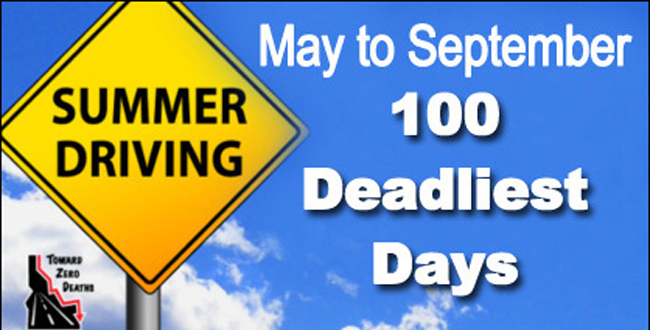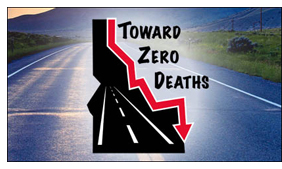

100 Deadliest Days especially dangerous for teen drivers
I want to say thank you to all our highway safety partners and for all the dedication you have shown toward highway safety. This is my last day at as the Highway Safety Manager as I am retiring. I know I speak for many when I say that by working together to change our highway-safety culture we will achieve Zero Fatalities on all of Idaho’s roadways.
Memorial Day kicks off the summer months, usually bringing a great anticipation of what the lazy summer days ahead will hold. However, Memorial Day also kicks off what is known as “The 100 Deadliest Days of Summer” – referring to the number of fatal crashes that happen on Idaho’s roadways. The days between the Memorial and Labor Day holiday weekends claim the highest numbers of fatal automobile crashes, especially when it comes to teen drivers.
The deadliest day to drive is widely acknowledged in the highway-safety community as the Fourth of July, and the third of July is right behind it. From a national perspective the deadliest month to be on the road is August, and historically, four of the top ten deadliest days throughout the United States for driving occur in the month of August. Statistically, a driver in the summer is more distracted and more reckless than the same driver would be during the winter months, when drivers pay more attention to the roads because of the more visible hazards of ice and snow.
Summer is a time for family outings and vacations, but these outings can quickly turn deadly or injurious if caution is not exercised. The last thing anyone needs is for their long-anticipated vacation to turn into a hospital stay, or worse, but this is exactly what happens to thousands of families every year. The worst bit of all of this is that many of those injured are in no way at fault for what has happened to them.
It is very important for each of us to become engaged in highway safety and to speak up. Everyone (you don’t have to be a driver) can have a voice to combat distracted, impaired, and aggressive driving. Everyone can have a voice on the usage of seatbelts. I like to think that wherever an individual is at any moment in time they can make the statement that “Highway safety happens with me …. Highway safety happens here!” Being a highway-safety advocate of one (yourself) can be very powerful and it can save lives.
Some may say we need stronger laws and to a certain point this could be true, but to really achieve our ultimate goal of zero fatalities it will take the commitment of each individual to make a life-changing decision that for today I choose not to drive distracted, impaired, aggressively and to always wear a seat belt. Even the strongest laws will never get us to our ultimate goal until each of us makes that strong commitment to change the highway-safety culture within ourselves and our communities.
by Brent Jennings
Highway Safety Manager
Published 06-12-15